I have a digital piano with an earphone output where I can connect a simple earphone (like in the picture below.) It works fine.
I would like to connect this earphone output to my smartphone jack (TRRS - GND, microphone, left channel and right channel) in order to record what I am playing. I need to bring line level down to microphone level using a 1000x voltage divider. I hope the picture below helps:
Using the circuit my smartphone is recording the sound fine and it looks good. When there is nothing being played in the piano, I hear a buzz/hiss sound which is pretty annoying in the recording.
What should I do to solve this problem? I tried changing the voltage divider from 33k/33 ohm resistor to 10k/10 ohm resistor (still 1000x reduction), but the buzz/hiss is still there.
NOTE: When I connect my ear phone to the piano, the sound is crystal clear, no buzz/hiss even in the loudest volume, so I am pretty sure something in the simple circuit above is causing this problem.
##### EDIT ######
@JRE I made the circuit as you said and here I provide you with the resulted audio:
https://acessodireto.quemfazsite.com.br/temp/audio.aac
To my ears, the noise is even worse than before. Then I tried the circuit below (I know, it has nothing to do with your circuit) but I still get lots of noise (less than the recording above):
Could it be that the resistor is adding noise? Maybe this type of resistor is bad and will always add noise? Maybe, is there another type of resistor I could buy in order to reduce change of noise?


